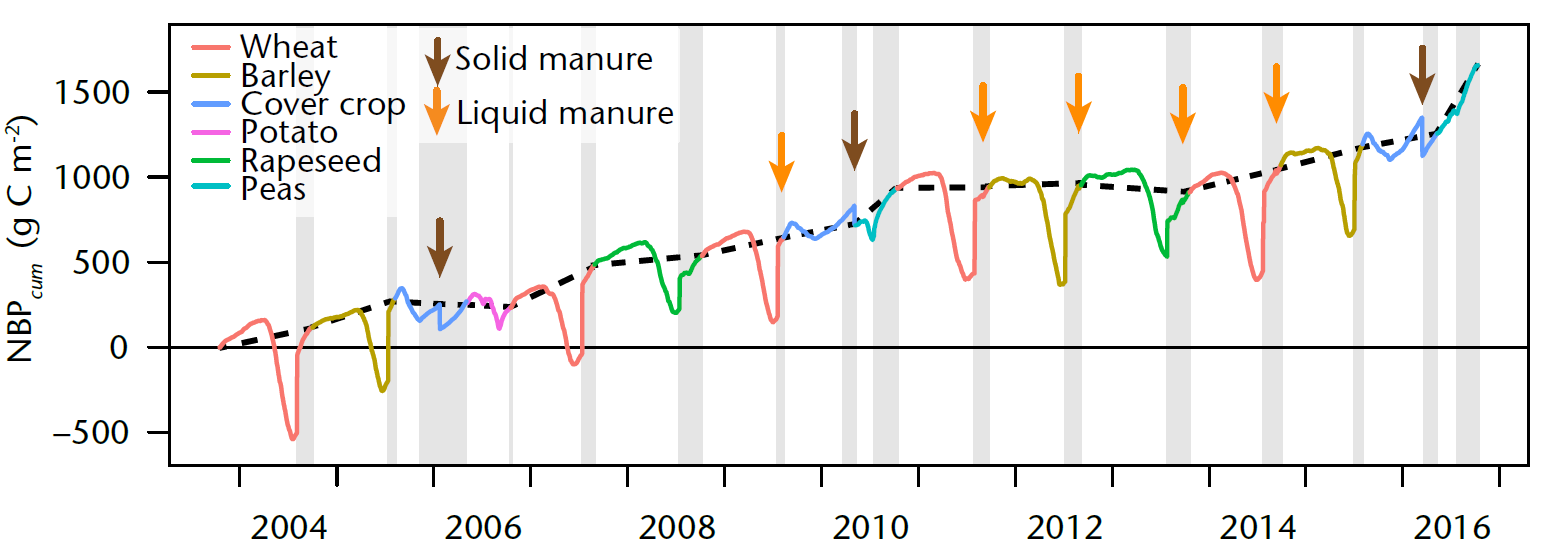Arable ecosystem – source or sink for carbon?
What measurements reveal about CO2 exchange
At the Oensingen research station, the CO2 exchange between the field and the atmosphere has been measured continuously since December 2003. When, how much and under what conditions the field releases CO2 into the atmosphere is important to understand, as CO2 is the main cause of climate change.
When wheat grows in the field, photosynthesis takes place during the day and CO2 is absorbed from the atmosphere, most of which is bound in the leaves and roots. At night, the process is reversed and, due to respiration, CO2 is released into the atmosphere. After the wheat has been harvested, there is no more CO2 uptake and there is only CO2 release into the atmosphere until the next crop grows.
1,728,000 measurements per day
The CO2 exchange is measured using the eddy covariance method. Two measuring devices are needed for this: the ultrasonic anemometer for horizontal and vertical wind speed and the gas analyser for determining the CO2 concentration. Measurements are taken 20 times per second, which corresponds to 1,728,000 measurements per day!
At the Oensingen research station, not only are greenhouse gases continuously measured, but numerous other measured variables such as air temperature, radiation or precipitation are also collected. Combining the measured data with the harvest samples, it is possible to determine whether the field is a carbon sink or a carbon source.

Carbon balance since 2003
The measurements accumulated since 2003 show that no crop was able to absorb enough CO2 for the field to be a carbon sink in the long term. The main reason for this is that most of the captured CO2 is taken back from the field via the harvest. Even the application of carbon in the form of manure or slurry could not sufficiently compensate for this.
